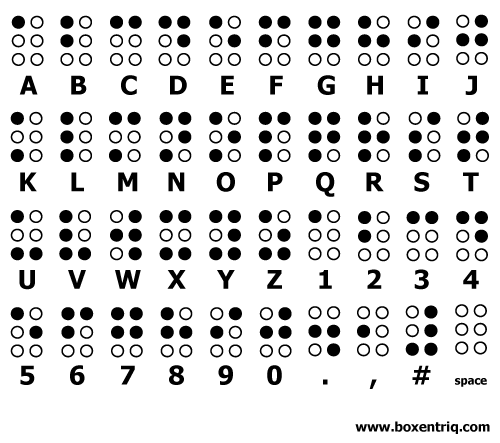Braille is a tactile writing system for visually impaired people. It was created by Louis Braille, a Frenchman who lost his sight because of a childhood accident. The Braille alphabet is represented by 2x3 dots, and includes letters, numbers and punctuations. It also can represent musical notation.
Translate Braille
Click on any image below to add it to the translation results.









































Braille alphabet (grade 1) summary

Features
- The Braille alphabet consists of 2x3 dot symbols, giving a possibility of 64 combinations in total.
- Numbers are usually prepended by a # symbol.
- In English Braille there are three grades: Grade 1 – a letter-by-letter transcription used for basic literacy; Grade 2 – an addition of abbreviations and contractions; and Grade 3 – various non-standardized personal stenography. Only grade 1 is described here.
- There are national variants of the Braille alphabets. A comparison is available here.
- There is also a Braille language for music notation.
The Braille alphabet is frequently used in geocaching mystery caches (puzzle caches), CTFs and logic puzzles. It is usually easy to detect by the presence of the dots.
Sample text



The image above represents the text "BOX" written with the Braille alphabet.
See also: Code-Breaking tools | Dancing men cipher | Elder futhark | Greek alphabet | Hexahue | International code of signals | Morse code | Semaphore flags | Tap code